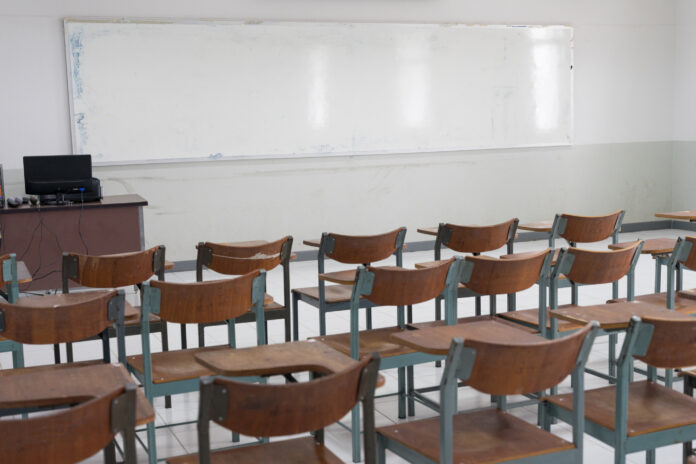By Bethany Blankley
(The Center Square) – About 42% of more than 8,500 public school districts in the country have returned to full in-person instruction, according to a “Return to Learn” tracker developed by the American Enterprise Institute and the College Crisis Initiative of Davidson College.
Iowa and Florida, which are fully reopened, are the only two states in which 100% of their school districts are providing in-person educational instruction, the analysis found. While Texas is also fully reopened, only 73% of its districts are providing full in-person instruction. Districts in states still under lockdown restrictions, like the District of Columbia and Hawaii, have no schools providing full in-person instruction, the analysis found.
“Stark differences between states persist,” the report states. “California remains an outlier, with 39 percent of districts without an option for in-person learning.”
The analysis is based on district-wide policies collected from district webpages, social media announcements, or direct contact with a district representative. To ensure uniformity in its analysis, the district’s operating plans are divided into fully in-person instruction, a hybrid model, or fully remote.
Fully in-person refers to all grade levels attending school inside their buildings five days a week with options for families to choose a hybrid option. Hybrid includes students who attend school in person some days and online remotely others. Fully remote includes all grade levels that are participating in virtual instruction five days a week only, with some exceptions for grades under first grade.
Among the 42% of school districts nationwide providing in-person instruction, 43% are high achievement districts and 42% are low achievement. However, “remote learning is more than twice as prevalent in low achieving districts (11%) compared to high achieving districts (4%),” the report states.
Slightly more than half of U.S. school districts, 51%, have reopened using a hybrid model.
Overall, 7% of districts are providing fully remote instruction. Eleven states have no fully remote school districts: Connecticut, Florida, Hawaii, Iowa, Idaho, Missouri, North Carolina, Nevada, Ohio, Rhode Island, South Carolina, and Wyoming.
The ten states that have the most school districts providing full in-person instruction include, Iowa and Florida, which have fully reopened, followed by Nebraska (81%), Alabama (78%), Missouri (78%), Georgia (77%), Ohio (75%), Texas (73%), Arkansas (72%) and Kansas (70%).
The ten states whose districts provide the least fully in-person instruction include the District of Columbia and Hawaii with zero, followed by Massachusetts (1.5%), Washington (5%), Delaware (5.9%), California (6.7%), Virginia (7.3%), New Jersey (9.4%), Oregon (9.8%), and New York (10.1%).
Those with the most restrictive policies, according to another metric used in the report, are California, New Mexico, Alaska, Oregon, Montana, Mississippi, Arizona, Alabama, Oklahoma and Louisiana.
The report is based on live data collection as of March 29.
The tracker’s goal “is to provide a fundamental, up-to-date baseline of school districts’ current reopening plans and how they change during the COVID-19 crisis. … We hope these data will serve school communities as they face ongoing decisions, provide the basic knowledge necessary for shaping policy across states, and allow other researchers to more accurately study how COVID-19 is upending and changing schools.”
Originally published by The Center Square. Republished with permission.








